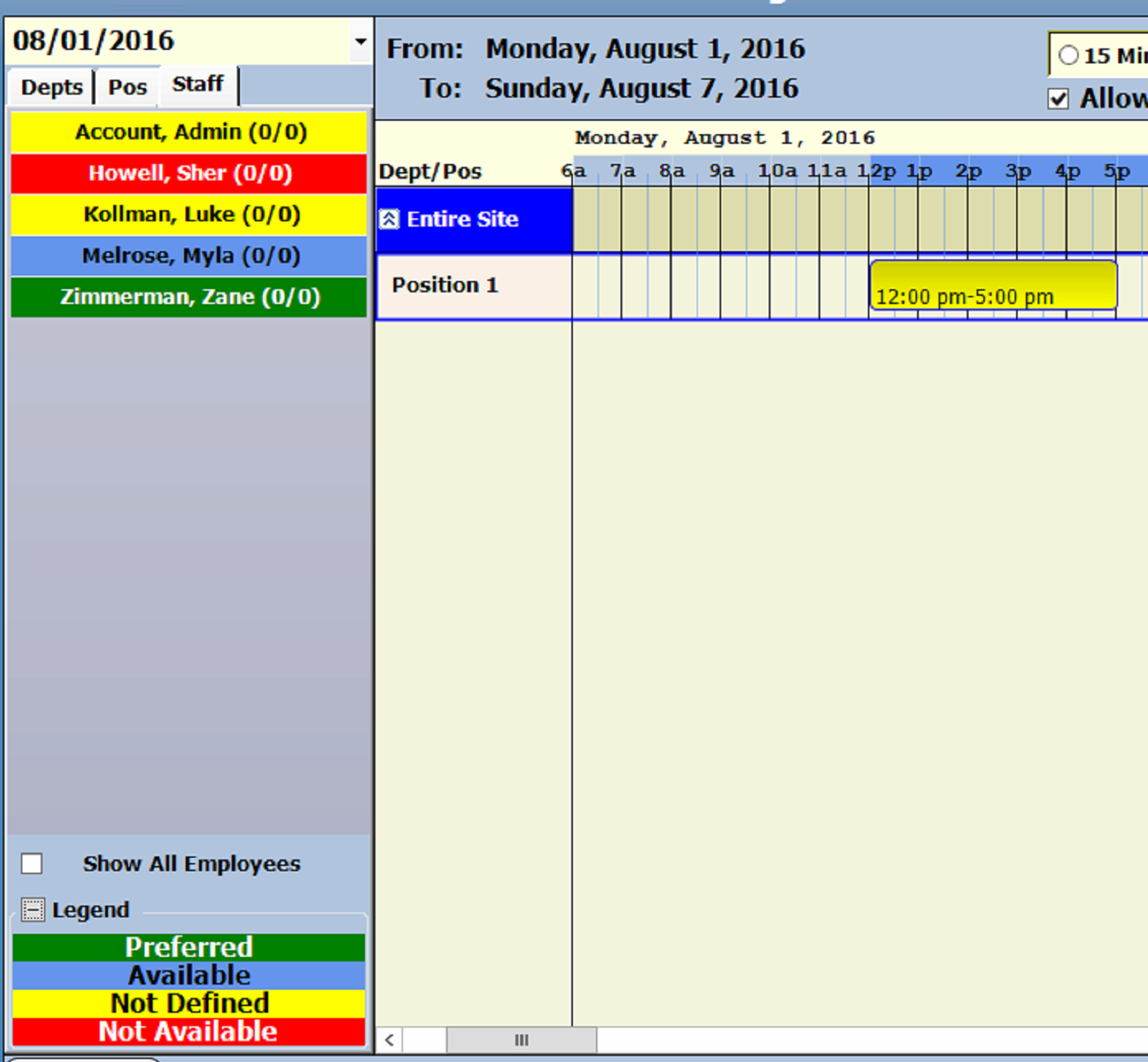Managing Labor and Scheduling at Your Family Entertainment Center
Today’s article comes from one of our CenterEdge trainers, Luke Kollman. As many of you know, CenterEdge is a company built by family entertainment venue operators to meet the unique needs of the industry. Luke was a long time user of the software as General Manager of an indoor/outdoor park in Winston-Salem, North Carolina. He was gracious enough to write today’s article to help address some of the challenges you may face with labor and scheduling. He was also consistently ranked first or second in labor spending when compared to all the GMs across the 16-park network he was a part of, so we are excited to have him share his best practices. Thanks, Luke!

One of the biggest challenges with regards to labor is wondering “am I doing everything I can to control my labor expenses?” Managing your labor can be one of the easiest ways to boost your profitability.
How to Calculate Labor as a Percentage of Revenue
The first step is knowing how much of your revenue is being used on labor. If this is not something you currently track, take your labor cost for a day and divide it by your total sales for that day. The answer is the percentage of your sales being used on labor.
For the average family entertainment center, your hourly wages should total 28-30% of your revenue, depending on the layout of your park’s attractions. Do that calculation every day for a few weeks to get a good idea of what days you’re spending too much on labor. If you’re using the CenterEdge timeclock module, you can run the Labor Cost Analysis report to do this for you.
Simple Scheduling Adjustments That Save HundredsWeekly
Once you’ve targeted a time frame you can start looking at ways to save on labor. Are you scheduling more team members on this day or is revenue consistently lower on this day of the week? Maybe both!
Analyzing your labor cost by the hour can help you determine what shifts can afford to have some time shaved off of them. Maybe some of the morning crew could come in half an hour later, or someone could go home when that dinner time lull starts.
Let’s say for example you have three team members come in 30 minutes later on Thursdays, and three that go home an hour earlier around dinner time. With the average minimum wage in the United States being a little over eight dollars, that small change in your schedule could save you almost forty dollars for the day. Do that for the whole week and you’ve saved over two hundred and fifty dollars.
Posting Schedules Early Improves Attendance
Now you might be asking, “but what if one of my team members doesn’t show up and then I’m short staffed?” We all know how that goes, especially when the majority of your workforce are teenagers.
If this is something you struggle with, try posting your schedule a little earlier. A good rule of thumb is to give at least two weeks’ notice. Giving at least two weeks will give your team members time to speak with management in order to plan and work through scheduling conflicts. Otherwise, they might no call/no show on you.
Create Stable, Repeatable Shifts to Avoid Scheduling Conflicts
Another way to ensure your team members know what shifts they work is to assign them some of the same shifts every week. Throwing them into random shifts every week is just asking for them to confuse this week’s shift with last week’s. A more stable and repetitive schedule is guaranteed to increase your team’s attendance.

Tracking Employee Availability With the CenterEdge Time Clock Module
Tracking team member availability is another great way to avoid scheduling conflicts. Is this something you’re keeping track of? If not, the CenterEdge Time Clock module will track of this for you.
You can have your team members set their preferred days, available days, and not available days (of course with you setting team members’ expectations that not all preferences can be honored due to the needs of the business). When creating your schedule, the team members will be color coded with green, blue, and red to show if it’s a preferred day, available day, or not available day, respectively.
If you’re not using the Time Clock Module, create a document to print and give to your team members so they can write down their availability. Keeping these on file will help you schedule them for shifts that they are less likely to have a conflict with.
Share Your Labor Tips
Though labor can be tough to manage, having the right team in place at the right time makes it all worth it in the end.
Have other labor tips you’d like to share? Send them to clientsuccess@centeredgesoftware.com or on social media.
Search Resources
Subscribe to Email Updates
Featured Resources
Blogs //
6 Self-Service Opportunities to Delight Your Guests Without Losing Your (Personal) Touch

News //
CenterEdge Now Integrates with PourMyBeer to Help FECs Serve Up Success

News //
ClawCADE is Newest Concept for Fast-Growing Family Fun Brands

Blogs //
Data-Driven Decisions: Using Management Software to Optimize Staffing & Guest Flow

Posts by Topic
- Advantage Payments (7)
- Brand Management (19)
- Business Growth (81)
- Capacity Management (2)
- CenterEdge News (28)
- Client Interviews (8)
- Credit Card Processing (3)
- Data & Reporting (12)
- Digital Signage (1)
- Event Management (20)
- Facility Management (10)
- Food & Beverage (8)
- Guest Experience (34)
- Guest Management (20)
- Holiday Season & Promotions (5)
- Industry Events (10)
- Inventory Management (1)
- Loyalty Programs (8)
- Marketing Tips (24)
- Operations (1)
- Point of Sale (10)
- Product Launch (11)
- Productivity (5)
- Profitability (35)
- Redemption Management (1)
- Sales (35)
- Season Passes (1)
- Team Training (60)
- Waivers (2)

Leave a Comment